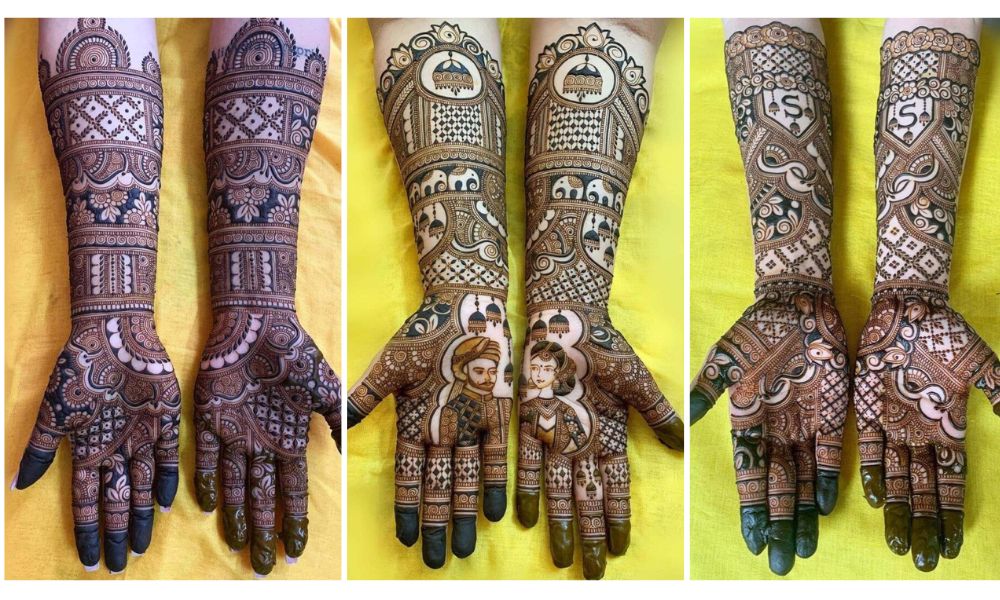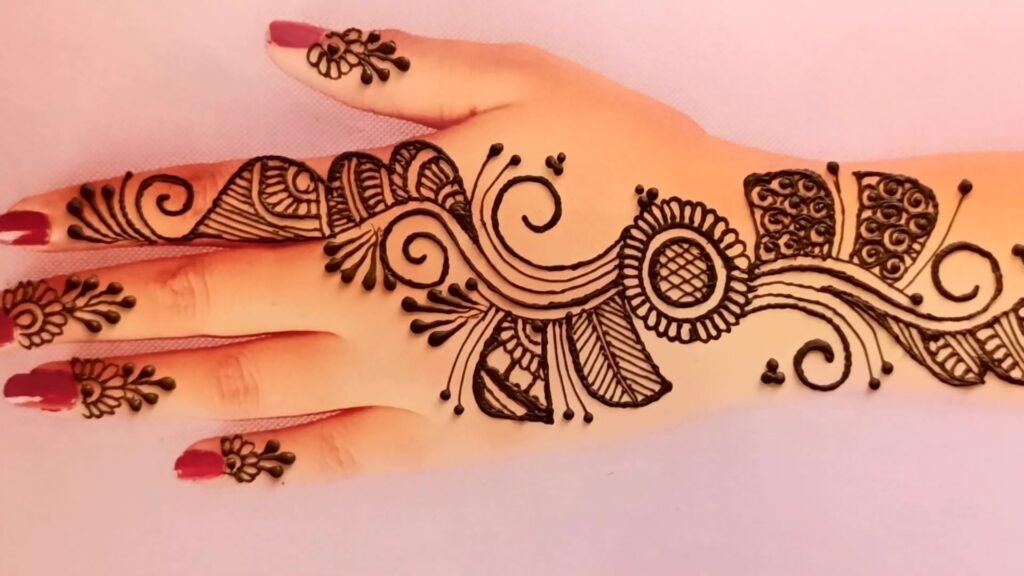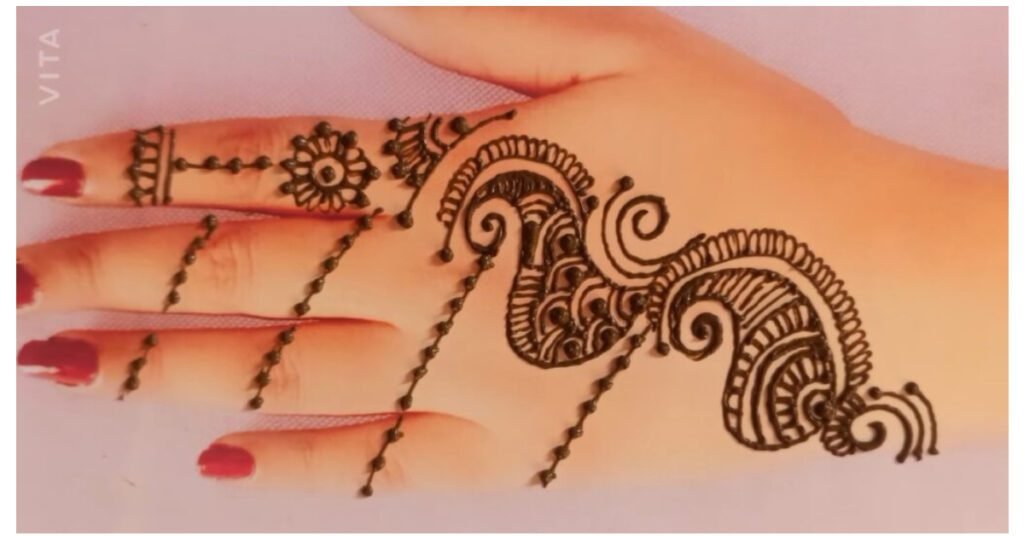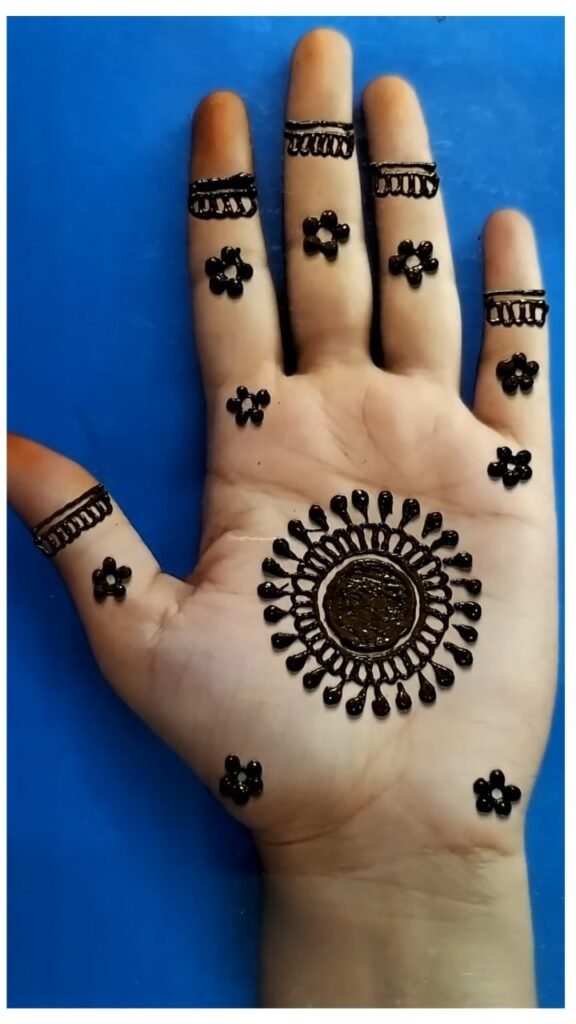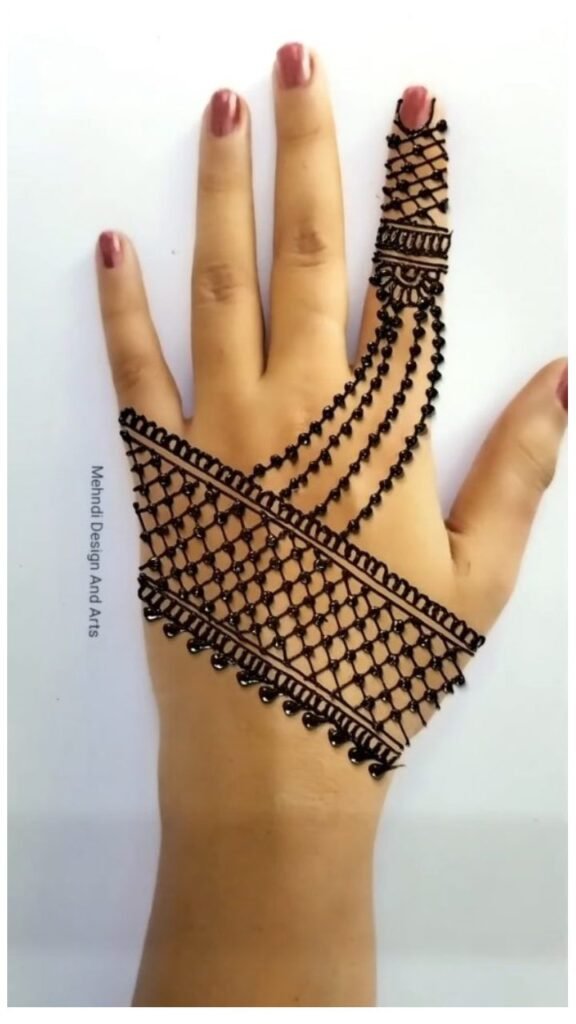New Full Hand Mehndi Design For Girls
Mehndi, also known as henna, is a form of body art that has been celebrated across cultures for centuries. It’s not just a temporary tattoo; it’s a symbol of joy, celebration, and tradition. In this article, we will delve into the enchanting world of full hand mehndi designs, exploring their history, significance, and how to create these intricate patterns that adorn hands so beautifully.
Full hand mehndi designs are not just about aesthetics; they hold deep cultural and symbolic value. Here’s what they represent:
Wedding is the biggest event in any girl’s life and she wants to look special on every wedding occasion. From roka to engagement and from haldi to mehndi, brides look different for every occasion. Full hand mehndi is an integral part of weddings and festivals in many cultures. It signifies the joy and celebration associated with these events .In some traditions, mehndi is believed to bring good luck and ward off evil spirits. It’s often applied to brides to ensure a happy and prosperous married life. Mehndi is a form of self-expression and beauty enhancement. It adds an exquisite touch to one’s appearance, making hands look stunning.
Minimalist Full Hand Mehndi Design 2023
If you prefer a simple and minimalist look, you can opt for a minimalist mehndi design. These designs feature clean lines, minimal patterns, and negative spaces. They are perfect for those who prefer a subtle and understated mehndi look, suitable for casual or everyday occasions.
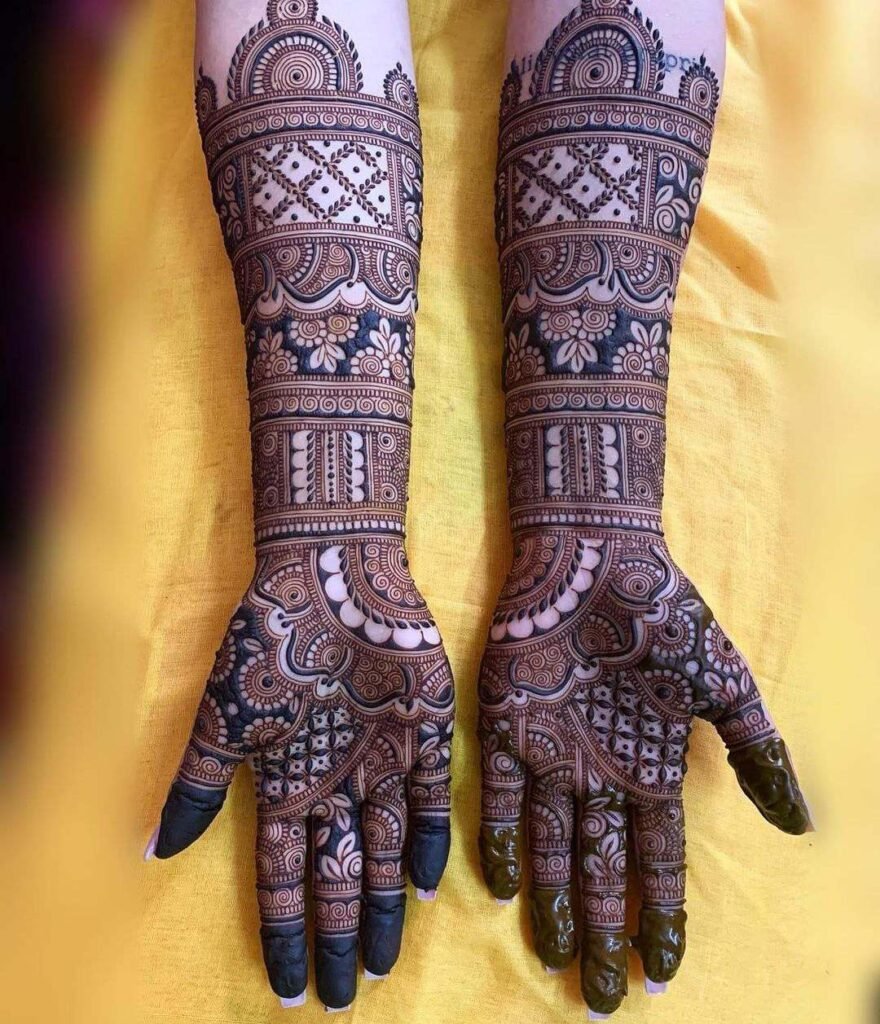
Full hand Arabic Mehndi design
These mehndi designs, much like the diverse cultures that embrace them, bring a unique and enchanting human touch to the world of body art. These designs are a canvas for creativity, allowing individuals to express their personalities, stories, and emotions through intricate patterns etched onto their hands. It’s not just about the stunning visual appeal; it’s about the human connection that forms when an artist carefully applies each delicate stroke, imbuing the design with meaning and depth. Arabic full hand mehndi is a beautiful fusion of tradition and contemporary artistry, and it tells a story that is as diverse as the hands it adorns, making it a captivating and deeply personal form of self-expression.

Full Hand Simple Mehandi Design 2023

Bridal Full hand Mehandi Design
Bridal full hand mehndi designs are not just intricate artworks; they are an embodiment of dreams, traditions, and the promise of a lifetime of love. As a bride sits down to have her hands adorned with these intricate patterns, there’s a palpable sense of anticipation and emotion in the air. It’s a moment where the past meets the future, as centuries-old customs blend with contemporary aspirations. The bridal mehndi artist, with a steady hand and a heart full of blessings, weaves intricate tales of love and happiness onto the bride’s palms. Each stroke of henna is a brushstroke in the bride’s personal love story, and the fragrance of mehndi in the air is a testament to the love and support of family and friends. Bridal full hand mehndi designs are not just about aesthetics; they are about capturing the essence of a new beginning, and it’s this emotional connection that makes them a cherished part of every wedding celebration.
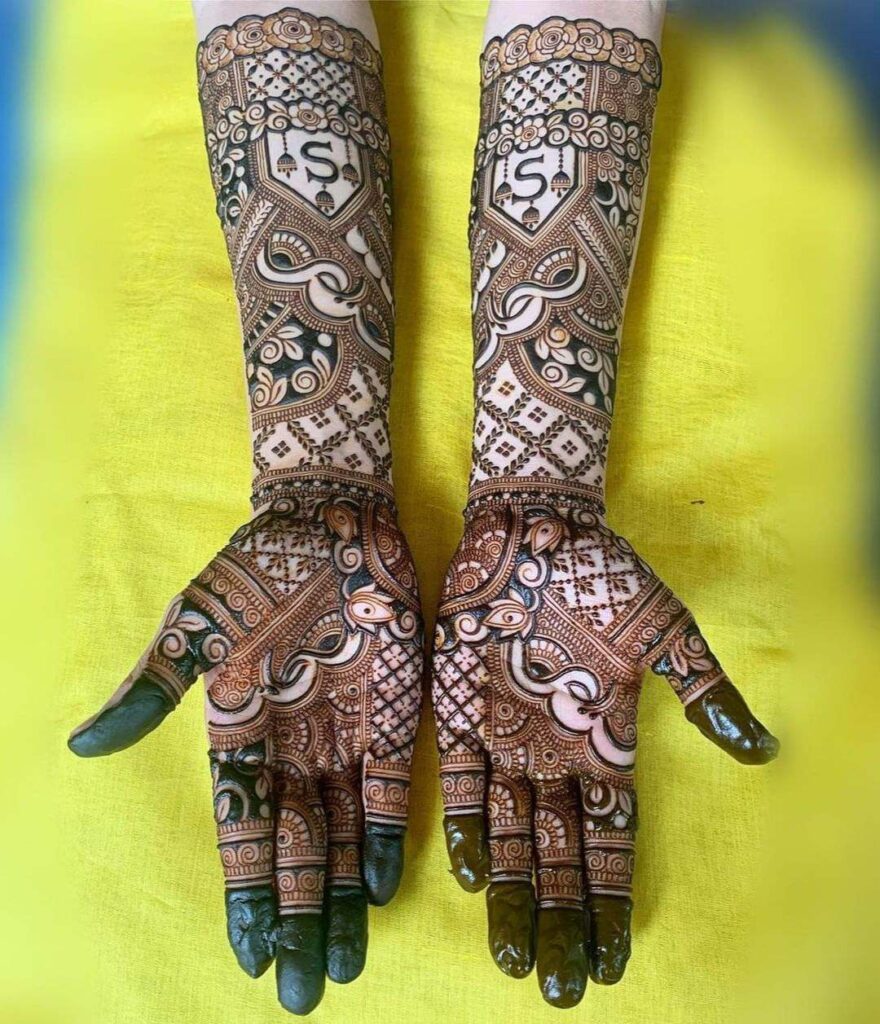

Simple full hand mehndi design
Simple full hand mehndi designs hold a special place in the world of mehndi artistry. They bring a beautifully understated human touch to this ancient tradition. These designs speak of elegance in simplicity, where every line and curve is purposeful. They are a testament to the fact that beauty need not be extravagant; it can be found in the most uncomplicated of patterns. Applying simple full hand mehndi is a shared experience, often done with friends and family, where laughter and conversation flow as easily as the henna paste. It’s a reminder that the simple joys of life can be just as exquisite as the most intricate designs, and it’s this human connection that makes simple mehndi designs so endearing and cherished.

Baby shower Full Hand mehndi designs
Baby shower mehndi designs are a delightful fusion of joy, anticipation, and artistry. They are a celebration of the impending arrival of a precious little one, and the designs often incorporate charming elements that symbolize fertility, growth, and new beginnings. Baby-themed motifs such as baby booties, rattles, storks, and tiny footprints are lovingly woven into the intricate patterns. These designs are not just about artistry; they are a symbol of the love and excitement that surround the soon-to-be parents. They capture the essence of the baby shower, making it a memorable and cherished part of the journey into parenthood. Baby shower mehndi designs truly add a touch of beauty and significance to this special celebration of life.
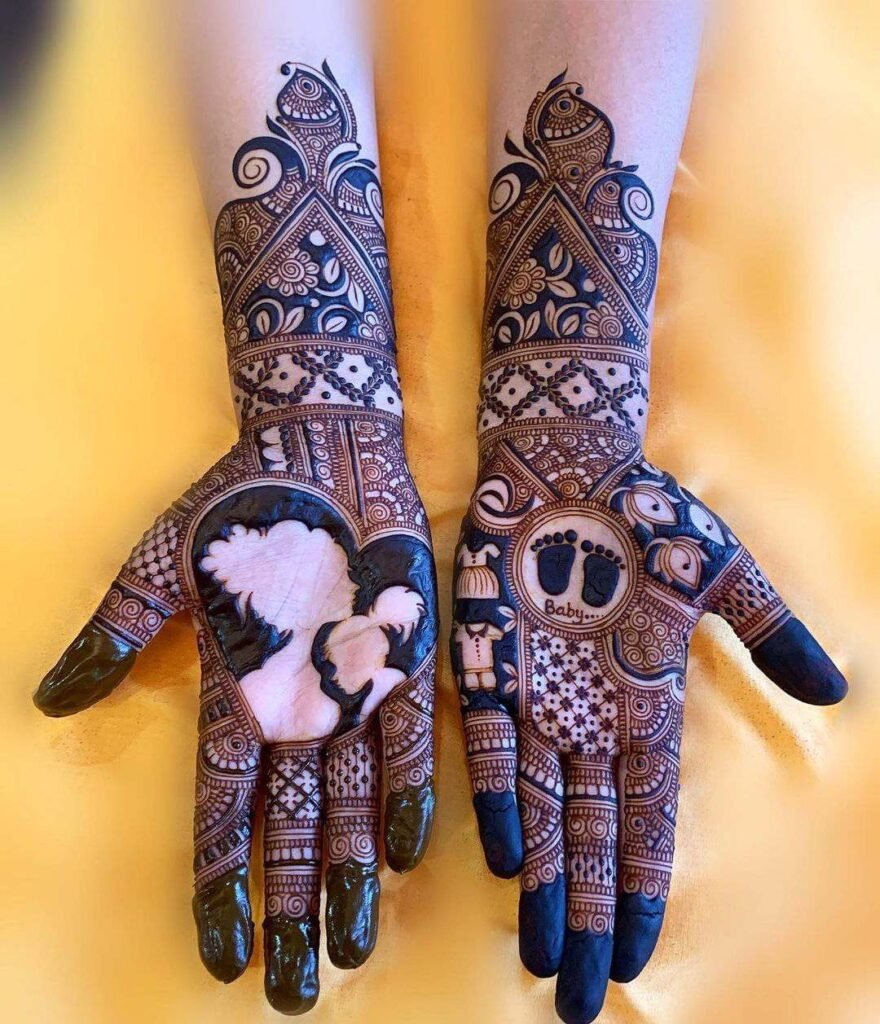
New Peacock Full Hand Mehndi Design
Peacock-inspired mehndi designs are always in trend. They feature the majestic peacock with its graceful feathers, which are often filled with intricate patterns and details. Peacock mehndi designs look stunning on the back of the hand or as a central design on the palm.

Image Credit – creativemehendidesignsbykajal
Mehndi as a Modern Trend
While mehndi has deep-rooted traditions, it has also evolved into a modern fashion statement. Many people opt for mehndi not just for weddings but also as a form of self-expression. Celebrities and influencers often showcase their mehndi designs, inspiring others to embrace this art form.
Conclusion
Full hand mehndi designs are a timeless art form that bridges the gap between tradition and modernity. They adorn hands with intricate beauty, symbolize joy and celebration, and hold deep cultural significance. Whether you’re preparing for a special occasion or simply want to express your creativity, mehndi offers a world of possibilities.
Also read-
20+ Simple Blouse Designs सिम्पल ब्लाउज डिजाईन
10 Sundar Aur Aasaan Mehndi Design : सुंदर और आसान मेहंदी डिजाइन
500 रुपये से भी कम कीमत में उपलब्ध है यह खुबसूरत Printed Georgette Saree
ईयररिंग्स डिजाईन: New American Diamond Earrings Design
Drop Earrings : Latest Gold Plated Drop Earrings Design For Girls
7 Fancy Stylish Silver Platted Choker Necklace For Girls and Women

